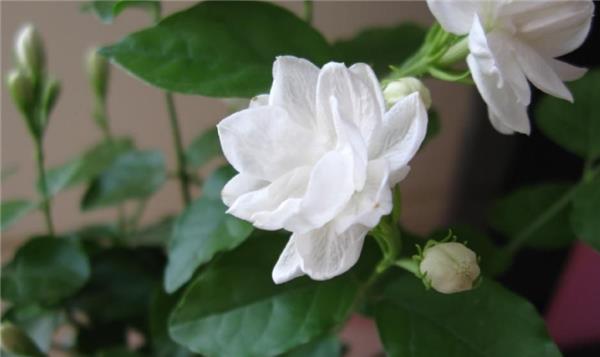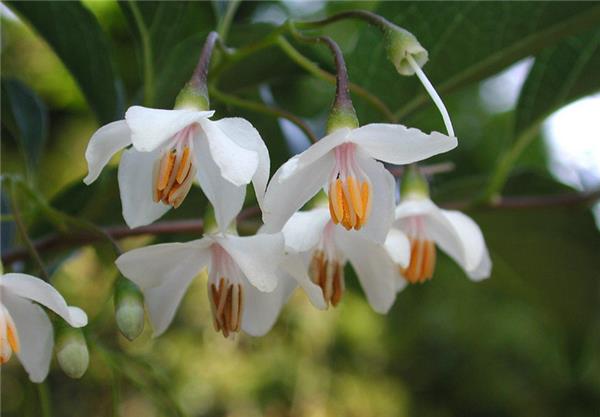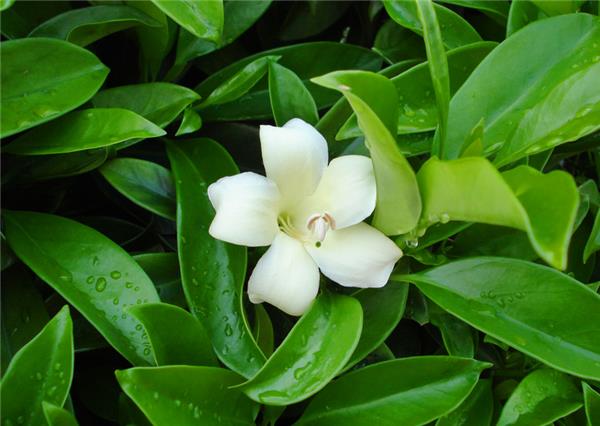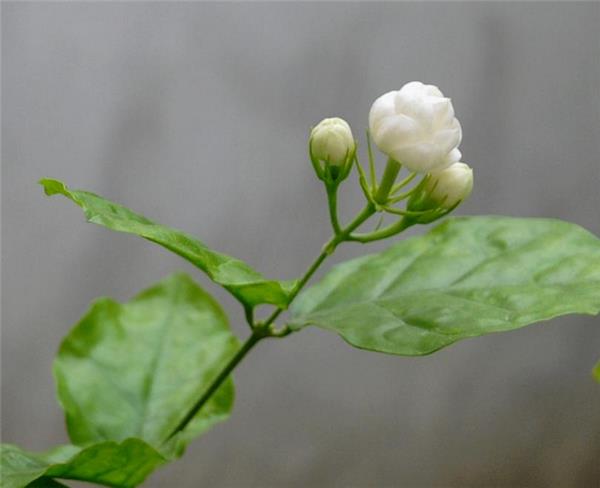How to raise Jasmine flowers Jasmine flowers cultivation method introduction
"Good a beautiful jasmine flower" accompanied by our childhood growth, now jasmine and with our family witness our maturity, jasmine is a lot of flower friends love flowers, fresh and elegant is its characteristics, then jasmine cultivation methods and what? Let's take a look at the cultivation methods of jasmine flowers.

1. Jasmine ecological habits
Jasmine flowers like warm, humid and sunny environments, and grow best in well-ventilated, semi-shady environments. The soil with a lot of humus slightly acidic sandy soil for the most suitable. Most varieties are afraid of cold, drought, frost, waterlogging and alkaline soil. When the winter temperature is lower than 3℃, the branches and leaves are prone to freezing injury, and if it lasts for a long time, they will die.
Jasmine is very fond of fertilizer. As long as it is properly maintained, potted jasmine can bloom three times a year. If the fertilizer is insufficient, nutrient is not enough, after a flower, no longer flowering. Jasmine management in place, you can keep from the end of May to the beginning of November, the key is pruning, sunshine, and fertilizer control.

2. Jasmine cultivation methods
First, the environment and lighting: Jasmine likes hot, humid, ventilated and breathable environment, and needs sufficient lighting. Jasmine is afraid of cold. Potted jasmine in the south can be cultivated outdoors for wintering. In the north, warm work should be done in autumn and winter. Move indoors and put it in the south direction. Light is strong branches, leaves green, flowers and fragrance, lack of sunlight is sparse flowers and less fragrance.
Second, water: jasmine is not drought-resistant, but also avoid water, rainy season to dump the basin water in time, otherwise the leaves are easy to yellow. Summer hot sunny days to water twice a day, morning and evening once, such as found that the leaves should be sprayed on the leaves, promote growth.
3. Soil: It is good to cultivate jasmine soil with fertile sandy and semi-sandy soil. Planting in slightly acidic soil with pH value of 6 to 6.5, the roots are dense and grow vigorously. If the soil is sticky, lack of matrix, low fertility, poor ventilation, less roots, short plants, slender stems and leaves, and fewer and smaller flowers.

4. Fertilization: The high temperature season in midsummer is the peak period for jasmine growth. Apply more organic fertilizer and phosphorus and potassium fertilizer, such as peanut cake powder, bone meal, calcium superphosphate and multi-element flower fertilizer, twice a month. Jasmine often appears luxuriant branches and leaves but does not bloom in summer growth period, the main reason is that too much nitrogen fertilizer is applied, resulting in excessive growth of branches and leaves. In such cases, fertilizer and water should be controlled, phosphorus and potassium fertilizer should be applied, so as to promote bud breeding. At the same time, attention should be paid to moving jasmine to a place with sufficient sunshine and good ventilation.
V. Pruning: Jasmine grows very fast in summer, so it should be pruned in time. Potted jasmine should be pruned to keep the base 10 cm to 15 cm, and most of the stout new shoots should be promoted. If the new shoots grow vigorously, they should be picked when growing 10 cm, and the second shoots should be promoted, so there will be more flowers and compact plant shape. Flowers should be cut off in time after withering, reduce nutrient consumption, but also promote the growth of new shoots, so that branches dense, bud more, flowering more.
VI. Prevention and control of diseases and insect pests: Jasmine often has moth larvae, scale insects and red spiders, which are most serious from July to September. They often eat flower buds. They can be sprayed with universal powder or fenvalerate and water 200 times. Spray once every half month. Even if there is no disease or insect pest, they should be sprayed first. The spraying time should be 9 a.m. and 4 p.m. on sunny days. It is not suitable to spray at noon in the hot sun to prevent phytotoxicity.

Through the above introduction, everyone knows about the cultivation method of jasmine, right? Jasmine lovers, what are you waiting for? Practice farming a pot, if you want to know more flower information, please pay attention to more wonderful content bar.
- Prev

How to raise green pineapple culture methods and matters needing attention
How to raise green pineapple culture methods and matters needing attention
- Next

A brief introduction to the culture methods of how to raise rose flowers
A brief introduction to the culture methods of how to raise rose flowers
Related
- Wuhan Hospital Iron Tree Blooming Result Was Instantly Frightened by the Gardener Master
- Which variety of camellia is the most fragrant and best? Which one do you like best?
- What is the small blue coat, the breeding methods and matters needing attention of the succulent plant
- Dormancy time and maintenance management of succulent plants during dormancy
- Minas succulent how to raise, Minas succulent plant pictures
- What are the varieties of winter succulent plants
- How to raise succulent plants in twelve rolls? let's take a look at some experience of breeding twelve rolls.
- Attention should be paid to water control for succulent plants during dormant period (winter and summer)
- Watering experience of twelve rolls of succulent plants
- Techniques for fertilizing succulent plants. An article will let you know how to fertilize succulent plants.

